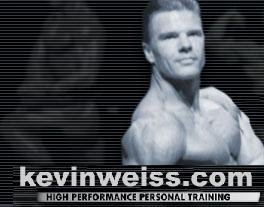-Mike Gauld
"Gun-Wavin" New Haven, CT
"Gun-Wavin" New Haven, CT
(Answered by FWG blogger and former UConn Basketball player Marty Gagne)
The 2004, 2006, and 2009 teams were/are engineered in a similar manner. The obvious connection is on the defensive end. UConn is currently ranked second in the nation in blocked shots and fifth in defensive rebounds per game. Using willpower, for the purpose of making defensive stops down the stretch, is an absolute must in tournament play... and this current team has shown the ability to do this.
 In 2004 and 2009, the defense was/is anchored by a shot-blocking center. This security allows guards to increase the amount of ball pressure applied to the opposing team. Ball pressure leads to turnovers, and turnovers lead to fast break points. This is Calhoun basketball. Furthermore, teams of this decade have featured lanky, athletic forwards (i.e. Charlie Villanueva, Rudy Gay, and Stanley Robinson). Long arms allows wing players to get into passing lanes and deflect errant passes.
In 2004 and 2009, the defense was/is anchored by a shot-blocking center. This security allows guards to increase the amount of ball pressure applied to the opposing team. Ball pressure leads to turnovers, and turnovers lead to fast break points. This is Calhoun basketball. Furthermore, teams of this decade have featured lanky, athletic forwards (i.e. Charlie Villanueva, Rudy Gay, and Stanley Robinson). Long arms allows wing players to get into passing lanes and deflect errant passes.This is when things get interesting. Coach Calhoun's backcourts often feature two guards with playmaking ability. The term "playmaker" refers to an aggressive slasher who can easily get into the paint (not necessarily to score, but to break down defenses). In the UConn system, this duo usually consists of a true leader at point guard and a small, attacking shooting guard. Doron Sheffer & Kevin Ollie, Ricky Moore & Khalid El-Amin, Taliek Brown & Ben Gordon, AJ Price & Jerome Dyson... Marcus Williams and..... ?
This was a significant on-court weakness of the 2006 team. Rashad and Denham were excellent scorers, but they lacked the ability to consistently create their own plays. And here is the missing thread: AJ Price. After arriving on campus as one of the top prep guards in the class, AJ raged war on Marcus Williams in the preseason pick-up games in preparation for the impending competition for the starting point guard position. AJ was impressive; he was quick, intelligent, and confident. Of course, this battle was never carried over into official practices because of the medical condition that arose.
This had a season-long effect. Marcus Williams was asked to play relentless minutes, being backed up only by Sami Ameziane, a walk-on. The following season brought Craig Austrie, who played error-free basketball as a backup, but there was no replacing the slashing, playmaking ability that AJ had shown.
Now consider this: during the 2004, 2005, and 2006 seasons, we achieved a #2, #2, and #1 seed, respectively. I believe that AJ's presence would have filled this void, and UConn would have legitimately contended for THREE consecutive national championships.
But in basketball, as with life in general, unforeseen circumstances arise. Plans change and life goes on. The final outcome in 2006 exemplifies that storybook endings are rarely made outside Hollywood. If naysayers who the criticized the 2006 team for nonchalant effort could have seen the locker room after the George Mason loss, their opinions would have quickly changed.
Dwelling on the past, or allowing the end result to outweigh the success of a 30-4 season, is completely futile. It's a blessing to be able to accept events that are out of your control while sustaining your best effort. Walk-ons quickly embrace this philosophy.
Furthermore, a highly-ranked group must maintain a difficult mindset. The team must understand that they are capable of achieving great things, yet retain an awareness that championships are not given away like free iPods. Strength should never shift to over-confidence. You have to manage your swagger... and stay hungry.
For instance, throughout the 2004 season, Ben Gordon promptly began his daily shooting drills and workout session at 5 o'clock... every morning.
Questions? Comments? Concerns?
Something we should be writing about?
Breaking News?
Something Funny?
Email it!




2 comments:
poetic... so much more intelligent then the usual meatstick that writes on this site.
The Marty Jinx is in effect! Dyson NOOOOOOOOOOOOO!
Post a Comment